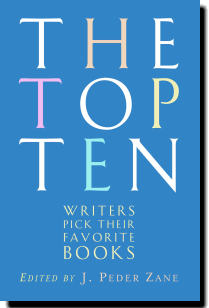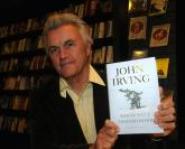This list reflects the rankings of all 174 lists published as of October 1, 2022. It is, of course, the most time-sensitive list and, sadly but inevitably, includes many changes from the original rankings published in the book (see below).
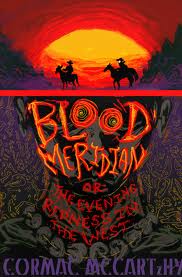 1. Blood Meridian: Or the Evening Redness in the West by Cormac McCarthy (1985). D. H. Lawrence famously remarked that the archetypal American hero was a stoic, a loner, and a killer. Cormac McCarthy’s tale of the formation and dissolution of a band of scalp hunters in northern Mexico in the late 1840s embodies that dire maxim. Led by a soldier named Glanton and a mysterious, hairless, moral monstrosity known as the “Judge,” these freebooters wipe out Indians, Mexicans, and each other amidst a landscape of such sublime desolation one feels it leaching into their very souls.
1. Blood Meridian: Or the Evening Redness in the West by Cormac McCarthy (1985). D. H. Lawrence famously remarked that the archetypal American hero was a stoic, a loner, and a killer. Cormac McCarthy’s tale of the formation and dissolution of a band of scalp hunters in northern Mexico in the late 1840s embodies that dire maxim. Led by a soldier named Glanton and a mysterious, hairless, moral monstrosity known as the “Judge,” these freebooters wipe out Indians, Mexicans, and each other amidst a landscape of such sublime desolation one feels it leaching into their very souls.
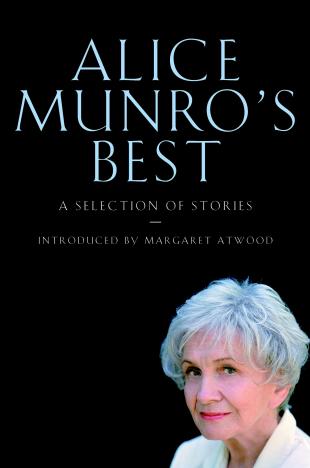 2. Stories of Alice Munro (1931– ). A master of the small epiphany, the moment of clarity, Alice Munro writes of men and women who struggle to reconcile the lives they have made with their sometimes confused longings. Largely set in urban and rural Canada, Munro’s stories feature characters whose inner lives gradually peel away to reveal themselves in all their richness and complexity. Munro’s plots do not forge ahead in a linear fashion, but loop and meander and take their time getting where they need to go, slowly revealing their characters and revealing what lies behind the choices they have made.
2. Stories of Alice Munro (1931– ). A master of the small epiphany, the moment of clarity, Alice Munro writes of men and women who struggle to reconcile the lives they have made with their sometimes confused longings. Largely set in urban and rural Canada, Munro’s stories feature characters whose inner lives gradually peel away to reveal themselves in all their richness and complexity. Munro’s plots do not forge ahead in a linear fashion, but loop and meander and take their time getting where they need to go, slowly revealing their characters and revealing what lies behind the choices they have made.
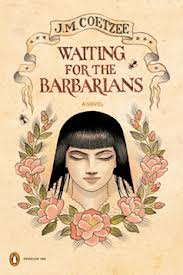 3. Waiting for the Barbarians by J. M. Coetzee (1980). A magistrate for an unspecified empire finds himself thrust into a growing conflict on the frontier. Fearing an invasion, the empire sends an army to eliminate the threat of neighboring “barbarians,” and the magistrate, accused of plotting with the enemy, is beaten and jailed. As he suffers these trials, the magistrate reflects on civilization and nature, suffering and oppression, and man’s barbarous tendency toward violence.
3. Waiting for the Barbarians by J. M. Coetzee (1980). A magistrate for an unspecified empire finds himself thrust into a growing conflict on the frontier. Fearing an invasion, the empire sends an army to eliminate the threat of neighboring “barbarians,” and the magistrate, accused of plotting with the enemy, is beaten and jailed. As he suffers these trials, the magistrate reflects on civilization and nature, suffering and oppression, and man’s barbarous tendency toward violence.
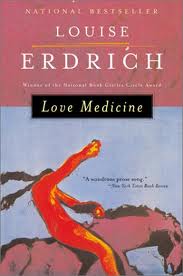 4. Love Medicine by Louise Erdrich (1984). The form of this novel, about two Native American families, reenacts that of a traditional Chippewa Indian story cycle—fourteen stories told by seven characters, forming a collage that forces the reader to sift through and weigh voice against voice, truth against truth. The book’s main story—a long-standing love triangle among a husband and wife and the promiscuous Lulu Lamartine—is often upstaged by Erdrich’s antimythic portrayal of Native Americans cut off from their traditional land, culture, and gods.
4. Love Medicine by Louise Erdrich (1984). The form of this novel, about two Native American families, reenacts that of a traditional Chippewa Indian story cycle—fourteen stories told by seven characters, forming a collage that forces the reader to sift through and weigh voice against voice, truth against truth. The book’s main story—a long-standing love triangle among a husband and wife and the promiscuous Lulu Lamartine—is often upstaged by Erdrich’s antimythic portrayal of Native Americans cut off from their traditional land, culture, and gods.
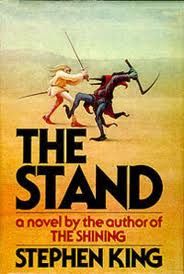 5. The Stand by Stephen King (1978). This vivid apocalyptic tale with dozens of finely drawn characters begins with the military’s mistaken release of a deadly superflu that wipes out almost everyone on earth. The few survivors, spread out across the barren United States, are visited in their dreams by a kindly old woman in Nebraska and a sinister man in the West. They begin making their way toward these separate camps for what will prove to be a last stand between the forces of good and evil.
5. The Stand by Stephen King (1978). This vivid apocalyptic tale with dozens of finely drawn characters begins with the military’s mistaken release of a deadly superflu that wipes out almost everyone on earth. The few survivors, spread out across the barren United States, are visited in their dreams by a kindly old woman in Nebraska and a sinister man in the West. They begin making their way toward these separate camps for what will prove to be a last stand between the forces of good and evil.
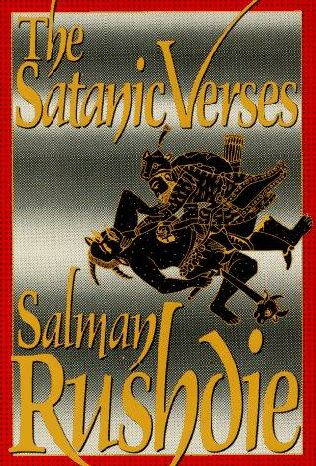 6. The Satanic Verses by Salman Rushdie (1988). After terrorists blow up their plane, two Indian actors fall from the sky. When they land, one has a halo, the other horns. This lush, lyric, sensual, and surreal novel then follows two main interrelated plots that skate along the blurry lines between good and evil, love and betrayal, knowledge and ignorance. The first plot line details these men’s tangled lives and strange transformations in London and Bombay; the second reimagines the life of Mohammed so critically that Iran’s Ayatollah Khomeni issued a death sentence against Rushdie.
6. The Satanic Verses by Salman Rushdie (1988). After terrorists blow up their plane, two Indian actors fall from the sky. When they land, one has a halo, the other horns. This lush, lyric, sensual, and surreal novel then follows two main interrelated plots that skate along the blurry lines between good and evil, love and betrayal, knowledge and ignorance. The first plot line details these men’s tangled lives and strange transformations in London and Bombay; the second reimagines the life of Mohammed so critically that Iran’s Ayatollah Khomeni issued a death sentence against Rushdie.
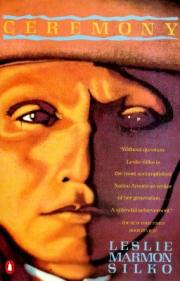 7. Ceremony by Leslie Marmon Silko (1977). Like many returning soliders, Tayo, who is half white and half Laguna Indian, has a hard time readjusting to civilian life after World War II, when he was held prisoner by the Japanese. Instead of venting his rage or turning to drink, he connects with a medicine man who helps him find solace through traditional ceremonies that reveal life as a process of change and growth.
7. Ceremony by Leslie Marmon Silko (1977). Like many returning soliders, Tayo, who is half white and half Laguna Indian, has a hard time readjusting to civilian life after World War II, when he was held prisoner by the Japanese. Instead of venting his rage or turning to drink, he connects with a medicine man who helps him find solace through traditional ceremonies that reveal life as a process of change and growth.
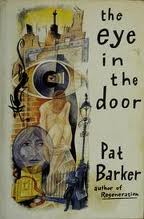 8. The Regeneration trilogy by Pat Barker (1995). These three novels—Regeneration (1991), The Eye in the Door (1993), and The Ghost Road (1995)—offer an unflinching look at World War I. Starting with the real-life psychiatric treatment of poet and British officer Sigfried Sassoon for shellshock, Barker shows how the war ruined but failed to replace nineteenth-century norms of gender, class, sexuality, and honor.
8. The Regeneration trilogy by Pat Barker (1995). These three novels—Regeneration (1991), The Eye in the Door (1993), and The Ghost Road (1995)—offer an unflinching look at World War I. Starting with the real-life psychiatric treatment of poet and British officer Sigfried Sassoon for shellshock, Barker shows how the war ruined but failed to replace nineteenth-century norms of gender, class, sexuality, and honor.
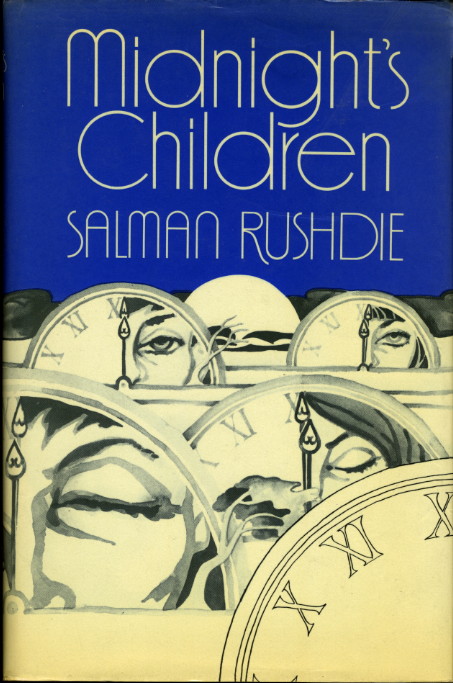 9. Midnight’s Children by Salman Rushdie (1981). Years before The Satanic Verses, Rushdie had already won the Booker Prize for this reverential and blasphemous novel. Two babies born at the precise moment modern India came into existence—one Muslim, one Hindu—are then switched at birth and grow up in the other’s faith. Midnight’s Children sets a plot of comic-book proportions—people with superpowers too lazy to band together—against the backdrop of the subcontinent’s conflict-ridden history, the language and idioms of Rushdie’s youth careening against each other with madcap imagination and jolting fury.
9. Midnight’s Children by Salman Rushdie (1981). Years before The Satanic Verses, Rushdie had already won the Booker Prize for this reverential and blasphemous novel. Two babies born at the precise moment modern India came into existence—one Muslim, one Hindu—are then switched at birth and grow up in the other’s faith. Midnight’s Children sets a plot of comic-book proportions—people with superpowers too lazy to band together—against the backdrop of the subcontinent’s conflict-ridden history, the language and idioms of Rushdie’s youth careening against each other with madcap imagination and jolting fury.
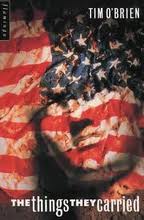 10. The Things They Carried by Tim O’Brien (1990). A Vietnam vet, O’Brien established himself as a chronicler of the war in nonfiction works such as If I Die in a Combat Zone (1973) and his National Book Award–winning novel Going After Cacciato (1978). In this, his crowning work, a character named “Tim” narrates a series of stories about himself and other young soldiers in his platoon who wrestle with the decision to go to war, walk through booby-trapped jungles, miss their loved ones, and grieve for their fallen comrades. Using simple, emotionally charged language, O’Brien explores the moral consequences and conundrums of the war through daily details, such as the things soldiers carry in their backpacks, and timeless issues, especially the scars they will always bear.
10. The Things They Carried by Tim O’Brien (1990). A Vietnam vet, O’Brien established himself as a chronicler of the war in nonfiction works such as If I Die in a Combat Zone (1973) and his National Book Award–winning novel Going After Cacciato (1978). In this, his crowning work, a character named “Tim” narrates a series of stories about himself and other young soldiers in his platoon who wrestle with the decision to go to war, walk through booby-trapped jungles, miss their loved ones, and grieve for their fallen comrades. Using simple, emotionally charged language, O’Brien explores the moral consequences and conundrums of the war through daily details, such as the things soldiers carry in their backpacks, and timeless issues, especially the scars they will always bear.
Top Ten Books by Living Writers from the Published Book
1. One Hundred Years of Solitude by Gabriel García Márquez (1967)
2. To Kill a Mockingbird by Harper Lee (1960)
3. Beloved by Toni Morrison (1987)
4. The Catcher in the Rye by J. D. Salinger (1951)
5. Rabbit Angstrom— Rabbit, Run (1960), Rabbit Redux (1971), Rabbit Is Rich (1981), Rabbit at Rest (1990)—by John Updike
6. Blood Meridian: Or the Evening Redness in the West by Cormac McCarthy (1985)
7. The Stand by Stephen King (1978)
8. The Stories of Alice Munro (1931– )
9. Mrs. Bridge (1959) and Mr. Bridge (1969) by Evan S. Connell
10. The Tin Drum by Günter Grass (1959)


